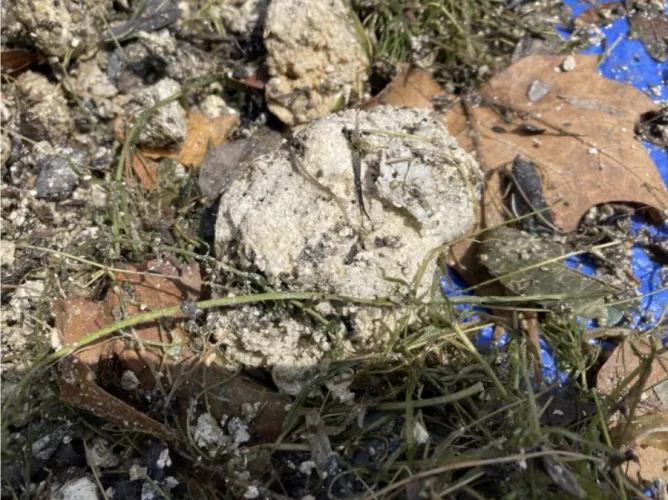
'Fatbergs' found floating on Toronto's waterfront by researchers
Floating, rock-like masses formed of fat, grease and trash like wet wipes and diapers — researchers found more than 100 of these "fatbergs" along the docks of Toronto Harbour last year.
Despite the stench, it's a celebratory feat. That's because since the research team's launch in the summer of 2019, keeping tabs on this form of pollution remained just out of reach.
"They certainly were there in the past. We just weren't capturing them," said Chelsea Rochman, an assistant professor of ecology at the University of Toronto. Rochman is the co-founder of the Trash Team, a group using contraptions called Seabins to track garbage and other pollutants in Lake Ontario.
The Seabin is a cylindrical container mounted to the side of a dock that sucks in all the gross surface gunk — everything from larger items to oil and gas spills, and even micro plastics.
RELATED: 'Flushable' wipes are a disaster for plumbing, lead to 'fatbergs'
Back in 2019, the project was only a pilot, with three Seabins at the Outer Harbour Marina and two student researchers to help collect and analyze their contents. But 2022 saw 10 Seabins installed on Toronto's waterfront, as well as 10 litter traps along Queens Quay and seven undergraduate students to help skim litter near Peter Street Basin Park, Rochman says.
In a news release Tuesday, Ports Toronto says the project captured a record haul of nearly 93,000 small pieces of plastic over the course of last summer.

Researchers look into a floating water trash device called a Seabin near Marina Quay West in Toronto. (Submitted by Ports Toronto)
DON'T MISS: Black plastic can't be recycled, for a reason most don't know
While the project was already a success, it was with the help of local organizations like Swim Drink Fish, the Waterfront Business Improvement Area, Toronto Region Conservation Authority and the city that it was able to expand.
"It's been more resources, but also, which I think is more exciting, more stakeholders coming to the table that want to be part of the solution and work together," said Rochman.
Researchers estimate 10,000 metric tonnes of waste enter the Great Lakes each year, much of it plastic. Fatbergs, or F.O.G monsters (fat, oils and grease), are reminders for residents to carefully consider the "three Ps" when they flush something down the drain, Rochman says.
"Pee, poop and paper. Nothing else should ever be going down," she told CBC Toronto. "At the end of the day, it comes back to haunt us in the places where we recreate or we fish, right? The places we love on the waterfront."

A fatberg is what researchers call a rock-like mass of waste often comprised of fat, grease and materials like wet wipes and diapers. (Submitted to CBC by Ports Toronto)
While waste is commonly found in urban waterways due to industry, overflows, debris blown away from trash bins near the water's edge and storm water runoff, Ports Toronto says human waste and microplastics are particularly harmful to wildlife and can contaminate drinking water.
Rochman says the Trash Team is using the data from each year to establish a baseline of how much waste they collect. When their growth stabilizes, they hope to figure out just how much aquatic pollution is improving or worsening overtime.
RJ Steenstra, president and CEO of Ports Toronto, says he's encouraged by the progress of the tracking program.
"We have witnessed a great many changes, notably the troubling rise in plastic pollution that now seriously threatens the sustainability and biodiversity of our lakes and waterways," he says.
WATCH: The gross reality exposed when you send "flushable wipes" down the toilet
This article, written by Vanessa Balintec, was originally published for CBC News.










